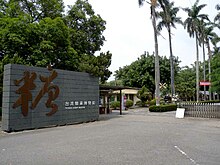This article includes a list of references, related reading, or external links, but its sources remain unclear because it lacks inline citations. (July 2008) |

A food museum tells the story of what sustains humankind. These museums are located all around the world, and spotlight various varieties and origins of certain foods. Such museums may be specifically focused on one plant, as is the Saffron Museum in Boynes, France. They may also explore foods made from plants. For example, The Bread Museum in Ulm, Germany, South Korea; a product such as the National Mustard Museum in Wisconsin, Big Mac Museum in Pennsylvania, Museum Kimchikan in South Korea, Cup Noodles Museum in Yokohama; the art of food displayed at California's Copia; food heritage showcased at Sichuan Cuisine Museum in Chengdu; or historic farms, for example, Iowa's Living History Farms, feature broader exhibits on art, history, and influence of food production.
In some cases, food museums focus on how and what the world eats. Agropolis in Montpellier, France does this, as does Nestle Foundation's Alimentarium, in Vevey, Switzerland. Japan's Ramen Museum is a food museum in the form of a shopping arcade featuring different noodle restaurants and displays on ramen history.